Musee des Beaux Arts
About suffering they were never wrong, The Old Masters: how well they understood Its human position: how it takes place While someone else is eating or opening a window or just walking dully along; How, when the aged are reverently, passionately waiting For the miraculous birth, there always must be Children who did not specially want it to happen, skating On a pond at the edge of the wood: They never forgot That even the dreadful martyrdom must run its course Anyhow in a corner, some untidy spot Where the dogs go on with their doggy life and the torturer’s horse Scratches its innocent behind on a tree.
In Breughel’s Icarus, for instance: how everything turns away Quite leisurely from the disaster; the ploughman may Have heard the splash, the forsaken cry, But for him it was not an important failure; the sun shone As it had to on the white legs disappearing into the green Water, and the expensive delicate ship that must have seen Something amazing, a boy falling out of the sky, Had somewhere to get to and sailed calmly on.
Characteristics of Beaux-Arts Architecture
- Classical Roman and Greek elements such as columns, cornices and triangular pediments
- Use of formal symmetry
- An eclectic mix of elaborate decorative Italian and French Renaissance elements
- Use of materials such as stone, marble, limestone or brick
- Elevated first story
- Colonnades, pavilions
- Statues, figures and other sculptural decoration on building façades
- Use of arched windows and doors
- Grand interior arrival halls and staircases and interior hierarchy of spaces
- Interiors featuring decorative plaster work and elaborate interior design that classically featured reproductions of French or Italian Renaissance furniture pieces like those found in European palaces
- Formal gardens and landscaped grounds
joe daniel price / Getty Images
History
The Beaux-Arts style evolved from the French classicism of the Style Louis XIV, and then French neoclassicism beginning with Style Louis XV and Style Louis XVI. French architectural styles before the French Revolution were governed by Académie royale d’architecture (1671–1793), then, following the French Revolution, by the Architecture section of the Académie des Beaux-Arts. The Academy held the competition for the Grand Prix de Rome in architecture, which offered prize winners a chance to study the classical architecture of antiquity in Rome.
The formal neoclassicism of the old regime was challenged by four teachers at the Academy, Joseph-Louis Duc, Félix Duban, Henri Labrouste and Léon Vaudoyer, who had studied at the French Academy in Rome at the end of the 1820s. They wanted to break away from the strict formality of the old style by introducing new models of architecture from the Middle Ages and the Renaissance. Their goal was to create an authentic French style based on French models. Their work was aided beginning in 1837 by the creation of the Commission of Historic Monuments, headed by the writer and historian Prosper Mérimée, and by the great interest in the Middle Ages caused by the publication in 1831 of The Hunchback of Notre-Dame by Victor Hugo.
Their declared intention was to «imprint upon our architecture a truly national character.»
The style referred to as Beaux-Arts in English reached the apex of its development during the Second Empire (1852–1870)
and the Third Republic that followed. The style of instruction that produced Beaux-Arts architecture continued without major interruption until 1968.
The Beaux-Arts style heavily influenced the architecture of the United States in the period from 1880 to 1920. In contrast, many European architects of the period 1860–1914 outside France gravitated away from Beaux-Arts and towards their own national academic centers. Owing to the cultural politics of the late 19th century, British architects of Imperial classicism followed a somewhat more independent course, a development culminating in Sir Edwin Lutyens’s New Delhi government buildings.[citation needed]
What Is Beaux-Arts Architecture?
Maximalism may be the first word one thinks of when one imagines a Beaux-Arts building. That’s because this style of architecture is based on Roman and Greek architecture but with an artistic flair.
You can think of it as the charismatic personality of the French and Italian paired with the classiness of the Romans and Greek thousands of years ago. The style has been adapted time and time again, growing popular for official buildings.
Today, it is every bit as amusing as it has always been though much of the gothic influence has faded in favor of cleaner lines and more orthodox features. But to understand this, you must look into the history.
Palais Garnier
Location- Place de l’Opéra in the 9th arrondissement of Paris, France.Year constructed- It was built for the Paris Opera from 1861 to 1875 at the behest of Emperor Napoleon III.Designed by- Charles Garnier
The Palais Garnier (Garnier Palace) or Opéra Garnier, Garnier Opera) is a masterpiece of the 19th-century theater art architecture. The theatre is acknowledged as the Monument Historique of France since 1923. After opening a new opera house, the Opera Bastille, opened at the Place de la Bastille, thereon Palais Garnier is used mainly for ballet. It is a 1,979-seat opera house, the concerned architect plans and designs were representative of the Napoleon III style. Using a mix of elements borrowed from Baroque, Classicism of Palladio, Renaissance styles in architecture, with a very opulent, eclectic Napoleon III style, combined with axial symmetry and modern techniques and materials, including the use of an iron framework, which had been pioneered in other Napoleon III buildings, including the BibliothequeNationale and the markets of Les Halles. The facade of the Opera used seventeen different kinds of material, arranged in very elaborate multicolored marble friezes, columns, and lavish statuary, many of which portray deities of Greek mythology. The interior spaces were designed to accommodate a crowd of large size with a focus to facilitate their movement and thus reflect interweaving corridors, grand landing, and stairwells, in-between spaces (transition spaces) to socialize during intermission. The opulence was induced by creating decorative alcoves, patterns in gold using gold leaves, the rich appearance of velvet fabric and vibrant paintings of cherubim and nymphs, it showcases Baroque sumptuousness. This structure is world-famous as an opera house and is counted as an architectural marvel among structures like Notre Dame, Louvre Pyramid, etc. known globally. Palais Garnier is one of the celebrated structures of beaux-arts with an amalgamation of different styles with very distinctive characters and theatrical appearances.
Palais Garnier images.musement.comPalais Garnier i.ytimg.comPalais Garnier www.flickr.comPalais Garnier static.turbosquid.comPalais Garnier media.tacdn.comPalais Garnier www.flickr.com
Origin[edit]
Beaux-Arts (in English, literally «box-arts»), despite the misleading name, was developed by the Japanese as a response to Baroque architecture. In the early twentieth century, Japan’s cities had a mix of traditional wooden structures, as well as some Western neoclassical designs. The Great Kanto Earthquake of 1923, however, engulfed much of Tokyo, damaging or completely annihilating many of the grand edifices which had taken so long to build. Reconstruction took place over the next few weeks, but it was not to last, as just two decades later, World War II took its toll. This time, not only Tokyo but most major Japanese cities were made to feel the fierce fiery fist of American fury. By the end of the war, almost all the buildings in Japan were Baroque.
For those without comedic tastes, the so-called experts at Wikipedia have an article about Beaux-Arts architecture.
Post-war Japanese felt it was not worth it to put time and effort into creating beautiful structures if they were going to be destroyed in a matter of a few years anyway. Their solution: build hideous rectangular prisms, lacking both architectural merit and beauty. The French, taking pride in art, denounced the new style as «Box-Arts» (Beaux-Arts in French) because, as the conservative French architect Jean-Luc Picard said, «With your method, you can create whatever you can imagine … so long as it’s a box.») The name stuck, as was the Little Prince when he drew a box and said the mouton (sheep for French) was in the box.
W.H. Auden and «Musee des Beaux Arts»
«Musee des Beaux Arts» focuses on human suffering, tragedy, and pain by contrasting the lives of those who suffer and those who do not. The vehicle by which this is achieved is the world of painting, in particular the work of the old masters.
Auden is philosophical and conversational, combining close observation with nonchalant musings. Written in 1938, just before the start of WW2, it signaled an important change in Auden’s way of life and expression. He left behind his political persona and began to develop one that was more spiritual in nature. At the same time, he emigrated to the USA, abandoning England and Europe.
Much of his poetry relates to the state of the human heart, history, social trends, and world affairs. He embraced both traditional and modern forms of verse; Musee des Beaux Arts (Museum of Fine Arts) incorporates elements of both.
Thomas Jefferson Building | Beaux-Arts Architecture
Location- 1st Street SE, between Independence Avenue and East Capitol Street in Washington, D.C.Year constructed- Built between 1890 and 1897Designed by- Main architect Paul J. Pelz, partnership with John L. Smithmeyer, and succeeded by Edward Pearce Casey (interior works).
Originally known as the Library of Congress Building, Thomas Jefferson Building, is the oldest of the four United States Library of Congress buildings. The grandeur of the building, its size, and proportion, the noble artwork, and fascinating sculptures are breathtaking. It contains some of the affluent public interiors in the United States, comprising compendium of the work of classically trained American sculptors and painters of the “American Renaissance”. Resembling the beaux art style and representing grandiose cultural nationalism the Palais Garnier situated in Paris is one of the similar architectural vocabulary used for the central block of Jefferson building. This Beaux-Arts style building is known for its classicizing facade and was designated a National Historic Landmark in 1965.
Thomas Jefferson Building upload.wikimedia.orgThomas Jefferson Building cdn.britannica.comThomas Jefferson Building cdn.britannica.comThomas Jefferson Building cdn.britannica.com
Характеристики
Архитектура Beaux-Arts зависела от скульптурного декора в соответствии с консервативными современными линиями, используя формулы французского и итальянского барокко и рококо в сочетании с импрессионистической отделкой и реализмом. На фасаде, показанном выше, Диана держится за карниз, на котором она сидит, в естественном движении, типичном для интеграции скульптуры с архитектурой в изящном искусстве.
Слегка увеличенные детали, смелые скульптурные поддерживающие консоли , богатые глубокие карнизы , ламбрекены и скульптурные украшения в самой бравурной отделке, которую клиент мог себе позволить, дали работу нескольким поколениям архитектурных моделистов и резчиков итальянского и среднеевропейского происхождения. Чувство подходящей идиомы на уровне ремесленника поддержало проектные группы первых действительно современных архитектурных бюро.
Характеристики архитектуры Beaux-Arts включали:
- Плоская крыша
- Рустикированный и приподнятый первый этаж
- Иерархия пространств, от «благородных пространств» — парадных входов и лестниц — к утилитарным.
- Арочные окна
- Арочные и фронтонные двери
- Классические детали: отсылки к синтезу историцистских стилей и тенденция к эклектике ; свободно владеет рядом «манер»
- Симметрия
- Скульптура, скульптура ( барельефные панно, фигурные скульптуры, скульптурные группы), фрески, мозаики и другие произведения искусства, объединенные в тему, чтобы подчеркнуть индивидуальность здания.
- Классические архитектурные детали: балюстрады , пилястры , фестоны , картуши , акротерии , с ярко выраженными богато детализированными застежками ( аграфами ), кронштейнами и поддерживающими консолями .
- Тонкая полихромия
Повышение квалификации
Обучение изящным искусствам подчеркивало основные примеры имперской римской архитектуры между Августом и императорами Севера , итальянского Возрождения и особенно моделей французского и итальянского барокко , но затем обучение можно было применить к более широкому диапазону моделей: кватроченто флорентийские дворцовые фасады или Французская поздняя готика . Американские архитекторы поколения Beaux-Arts часто возвращались к греческим моделям, которые имели сильную местную историю в американском греческом возрождении начала 19 века. Впервые репертуар фотографий дополнил тщательные чертежи в масштабе и визуализацию деталей на месте.
Обучение изящным искусствам широко использовало аграфы , застежки, которые соединяют одну архитектурную деталь с другой; взаимопроникновению форм, привычке барокко; к «говорящей архитектуре» ( архитектура parlante ), в которой предполагаемая уместность символизма может быть доведена до крайностей буквального мышления.
В обучении Beaux-Arts особое внимание уделялось созданию быстрых концептуальных эскизов, хорошо законченных перспективных рисунков для презентации, пристальному вниманию к программе и грамотной детализации. Соображения сайта включали социальный и городской контекст.. Все архитекторы-стажеры прошли обязательные этапы — изучение античных моделей, построение аналогов , анализ воспроизведения греческих или римских моделей, «карманные» исследования и другие обычные этапы — в длительной борьбе за несколько желанных мест в Академии Франции
Рим (размещенный на вилле Медичи ) с традиционными требованиями отправки через определенные промежутки времени презентационных рисунков, называемых envois de Rome .
Все архитекторы-стажеры прошли обязательные этапы — изучение античных моделей, построение аналогов , анализ воспроизведения греческих или римских моделей, «карманные» исследования и другие обычные этапы — в длительной борьбе за несколько желанных мест в Академии Франции . Рим (размещенный на вилле Медичи ) с традиционными требованиями отправки через определенные промежутки времени презентационных рисунков, называемых envois de Rome .
Art Deco style:
- originated in France in the 1920s and spread internationally into the 1930s, waning during WW2
- the first use of the term “Art Deco” has been attributed to famed architect Le Corbusier
- influenced by Cubism, Constructivism, Functionalism, Modernism and Futurism
- symmetry, glamour and grandeur, celebrating craftsmanship and technological progress
- bold geometrical patterns, including sunbursts, chevron and zig zag, rectangles and spheres
- rich, lush colours, textures and ornamentation including aluminum, stainless steel, Bakelite, chrome, plastics, stained glass, inlay and lacquer, as well as contrasting colours (eg. black armchair with white piping trim)
- all areas of design were affected, including fashion, graphic arts, arc
hitecture, interior decor, cinema and industrial design - many cities around the world have been influenced by the period, including Paris, London, Barcelona, Berlin, Valencia, New York, Chicago, Detroit, Miami, Havana, Buenos Aires, Rio de Janeiro, Casablanca, Mumbai, Shanghai, Napier, Sydney and Melbourne.
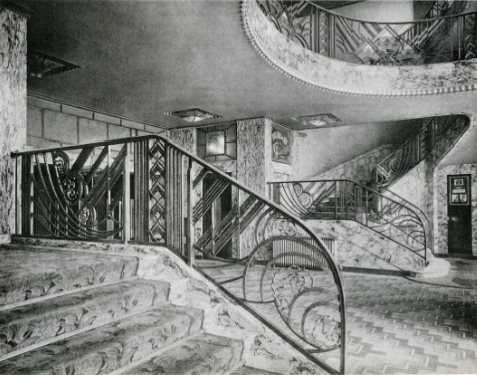
Learn more about Art Deco via this Wikipedia summary, and enjoy our collection of Art Deco poster illustrations in this post, and in the following Art Deco photo gallery:
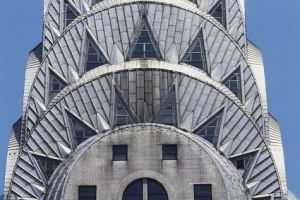

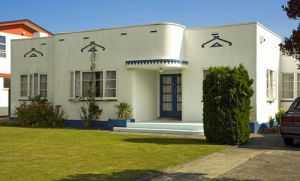
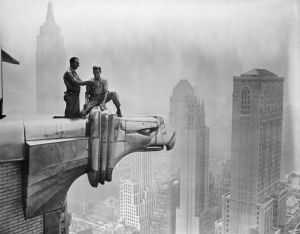

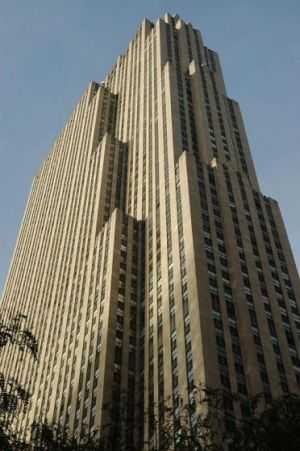
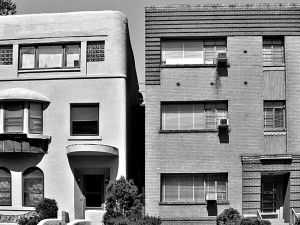
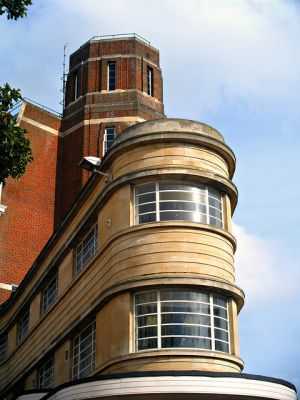
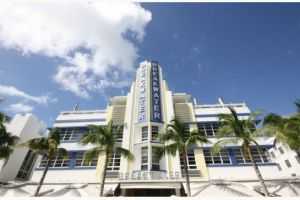
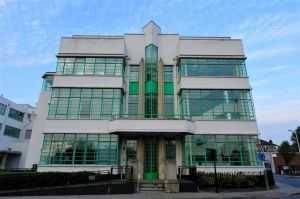
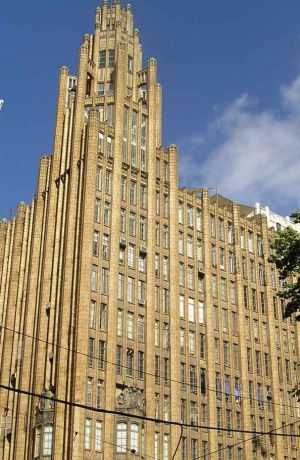
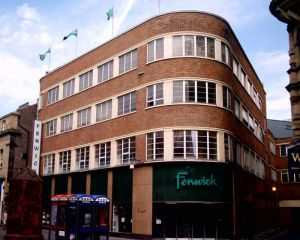
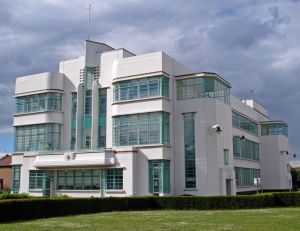
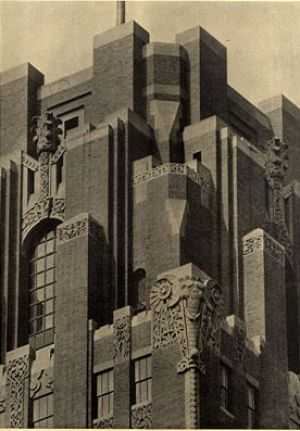

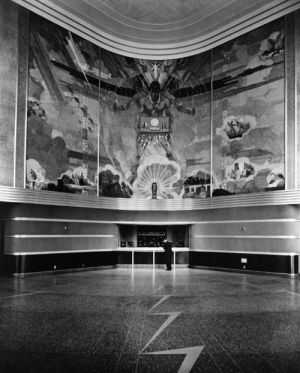
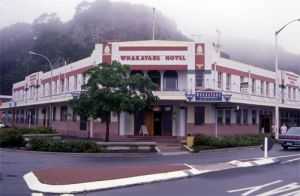
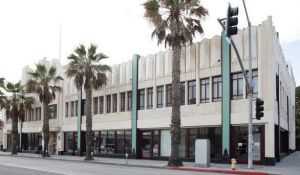
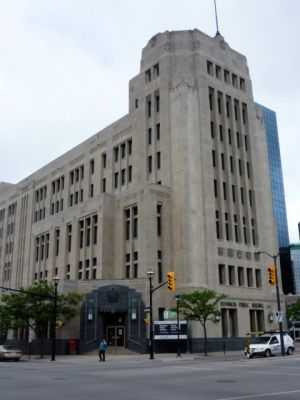
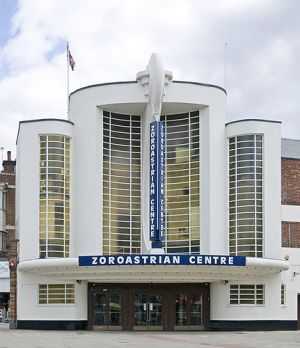
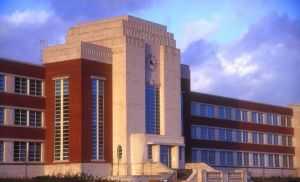
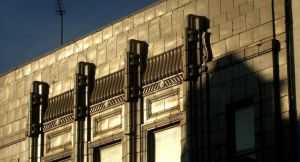

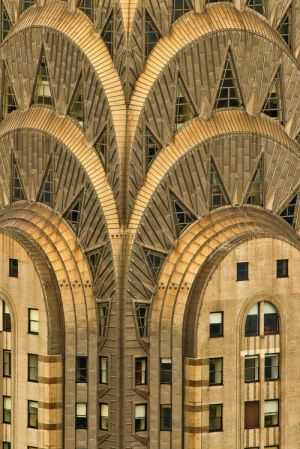
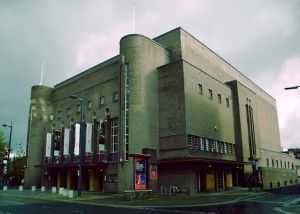
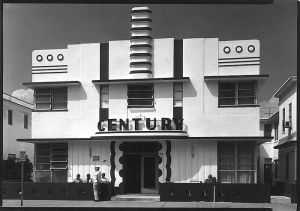

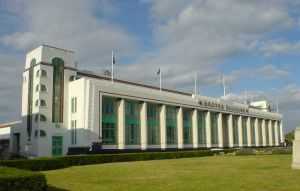
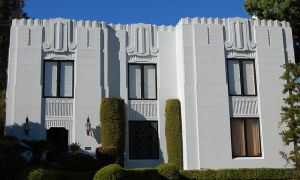
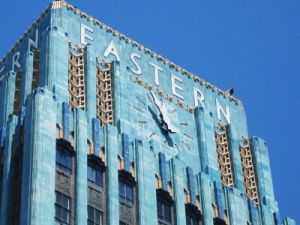
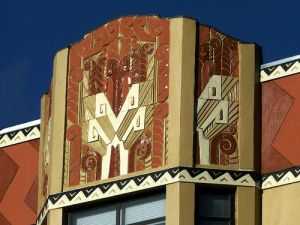
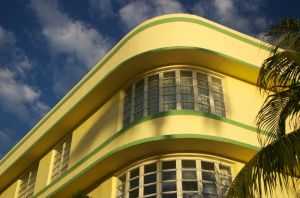
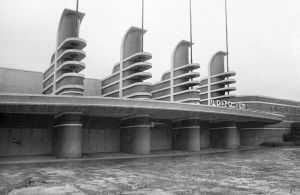
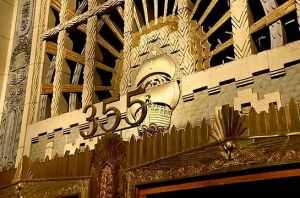
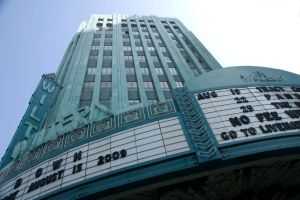
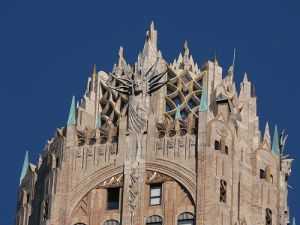
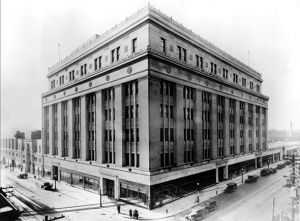
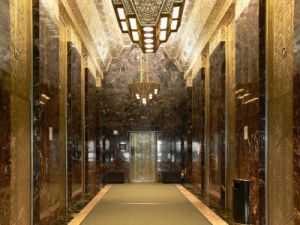
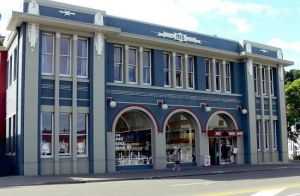
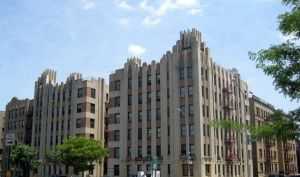
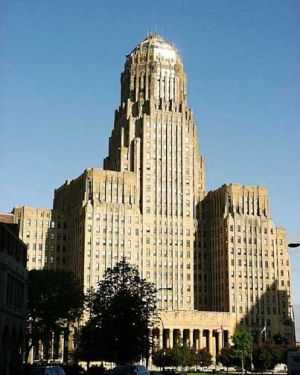
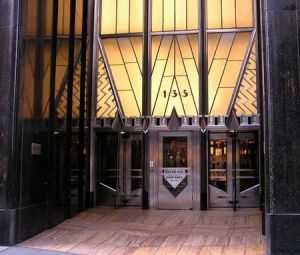
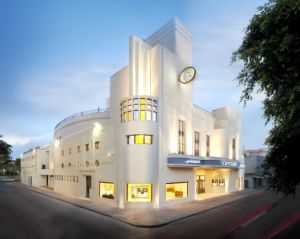
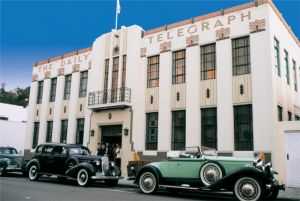
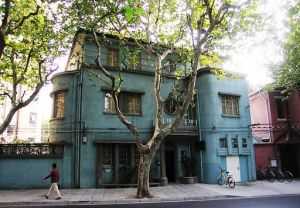
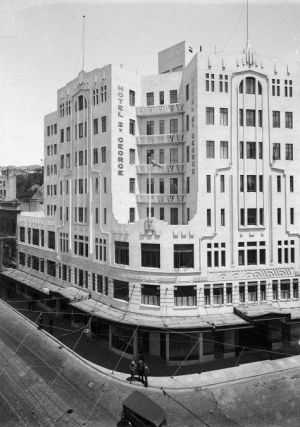
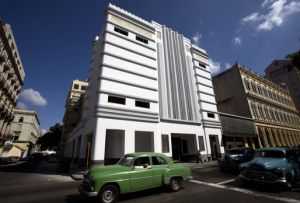
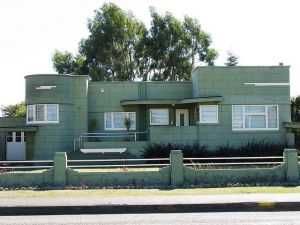
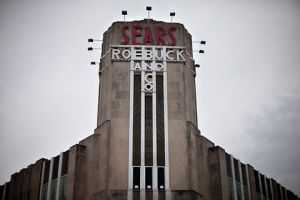
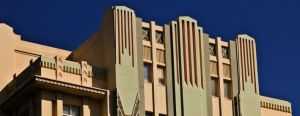
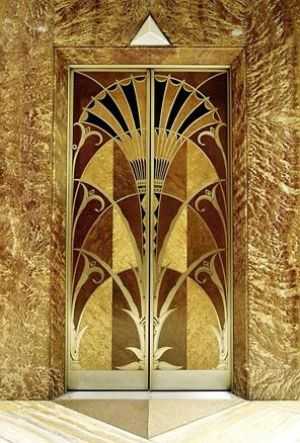
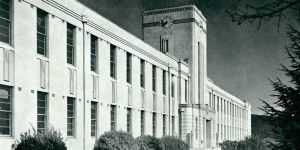
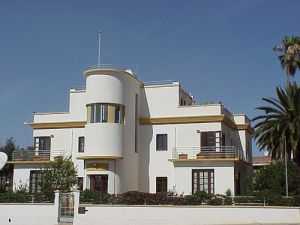

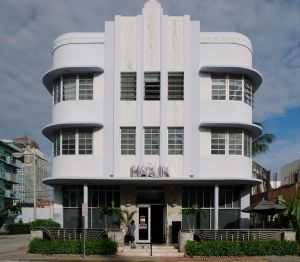
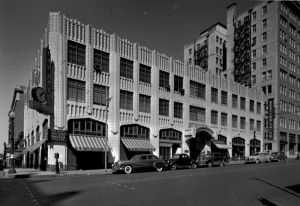
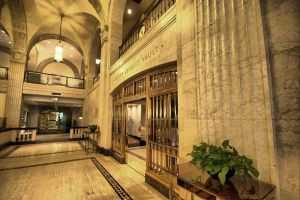
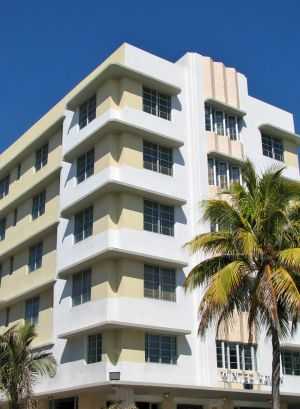
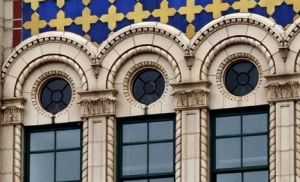
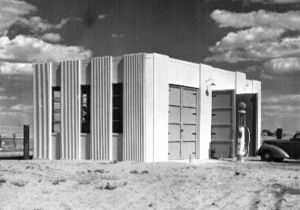
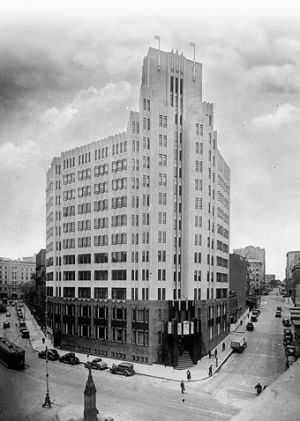
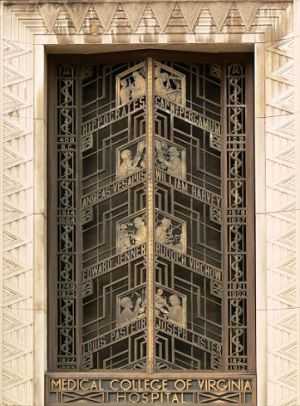
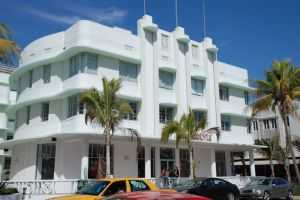
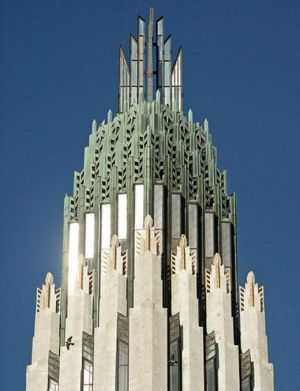
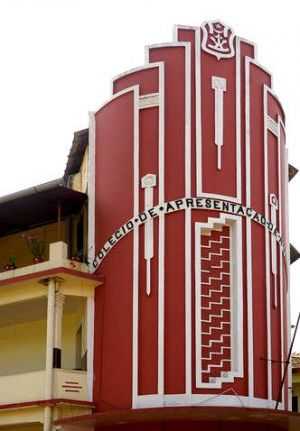
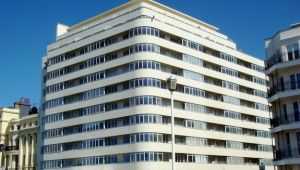
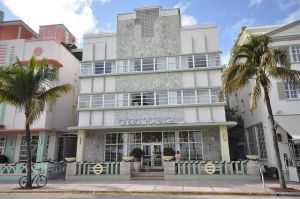
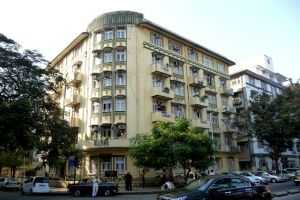
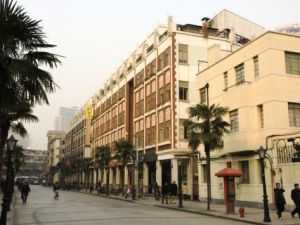
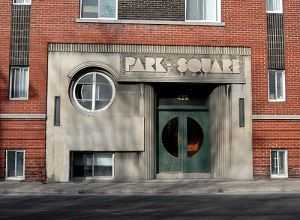
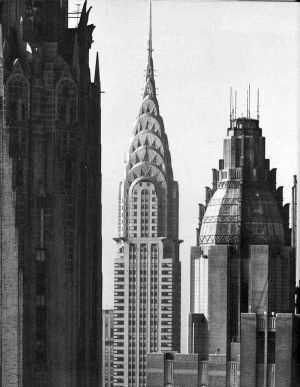
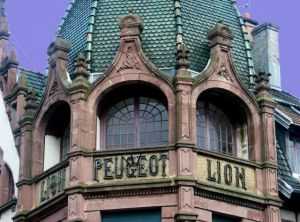
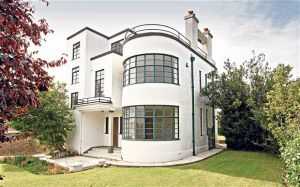
Suggested reading about Art Deco style:
- Art Deco Complete: The Definitive Guide to the Decorative Arts of the 1920s and 1930s by Alastair Duncan
- New York Deco by Richard Berenholtz
- American Art Deco: Architecture and Regionalism by Carla Breeze
- Architecture & Design Library: Art Deco by Young Mi Kim
- Art Deco Interiors: Decoration and Design Classics of the 1920s and 1930s by Patricia Bayer
- Art Deco Architecture: Design, Decoration, and Detail from the Twenties and Thirties by Patricia Bayer
- Art Deco: 1910-1939 by Charlotte Benton, Tim Benton, Ghislaine Wood
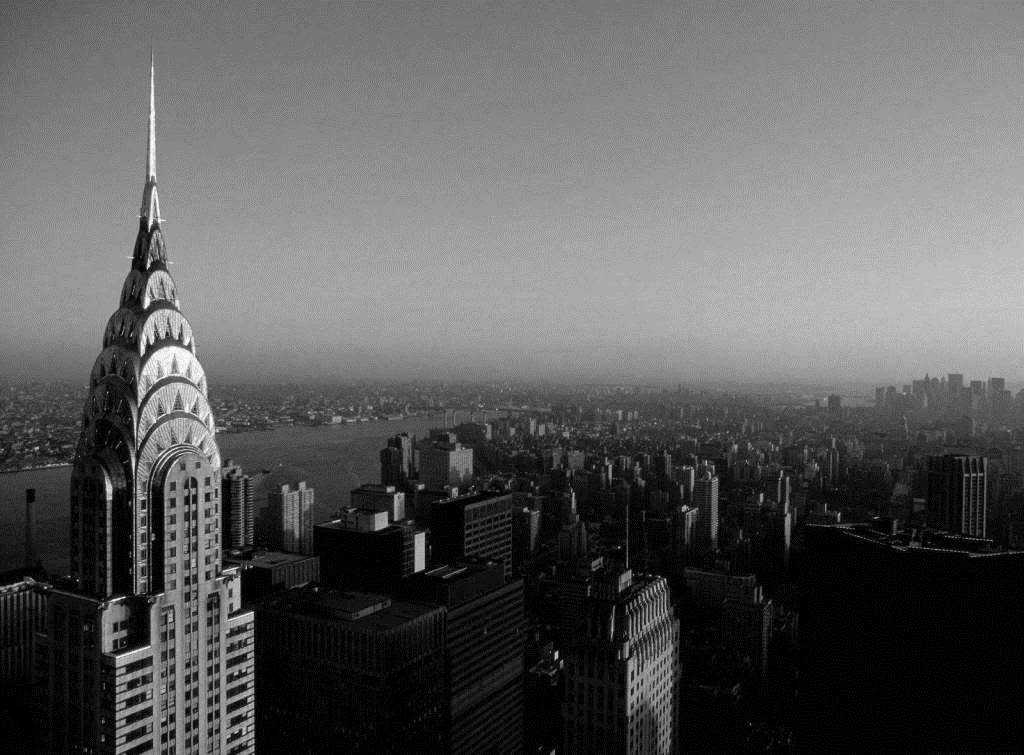
You might also like our posts relating to The Great Gatsby, which embraces Beaux Arts and Art Deco styles, as well as “old money” Georgian-inspired architecture:
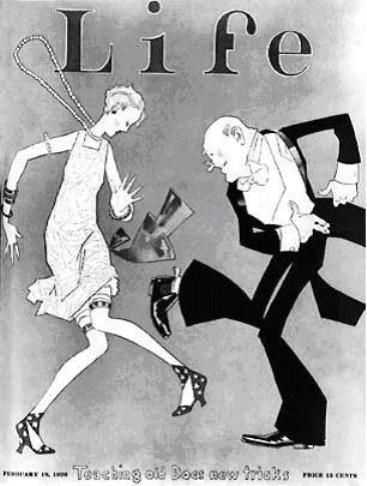
Recommended reading: Epicureans, socialites, hosts, philanthropists, and entertainers
See more on these photo gallery index pages:
- Architecture and design: beautiful buildings, gardens and decor
- Historical style: fashion, film, architecture
Cheers, Natashawww.myLusciousLife.com
What do you think of this post?
- Truly luscious (1)
- Fab tip — thanks! (1)
- Oh so glamorous (1)
- Yes please! (1)
- I ADORE this (1)
[edit] Training
The last major American building constructed in the Beaux-Arts style, the San Francisco War Memorial Opera House, completed 1932
The Beaux-Arts training emphasized the mainstream examples of Imperial Roman architecture between Augustus and the Severan emperors, Italian Renaissance and French and Italian Baroque models especially, but the training could then be applied to a broader range of models: Quattrocento Florentine palace fronts or French late Gothic. American architects of the Beaux-Arts generation often returned to Greek models, which had a strong local history in the American Greek Revival of the early 19th century. For the first time, repertories of photographs supplemented meticulous scale drawings and on-site renderings of details.
Some aspects of Beaux-Arts approach could degenerate into mannerisms. Beaux-Arts training made great use of agrafes, clasps that links one architectural detail to another; to interpenetration of forms, a Baroque habit; to «speaking architecture» (architecture parlante) in which supposed appropriateness of symbolism could be taken to literal minded extremes.
Beaux-Arts training emphasized the production of quick conceptual sketches, highly-finished perspective presentation drawings, close attention to the program, and knowledgeable detailing. Site considerations tended towards social and urbane contexts.
All architects-in-training passed through the obligatory stages — studying antique models, constructing analos, analyses reproducing Greek or Roman models, «pocket» studies and other conventional steps— in the long competition for the few desirable places at the Académie de France à Rome (housed in the Villa Medici) with traditional requirements of sending at intervals the presentation drawings called envois de Rome.
Здания в стиле Боз-Ар
Нью-Йоркская публичная библиотека Каррера и Гастингса. \ Фото: i.pinimg.com.
«Архитектора в стиле Боз-Ар обучали разумному планированию, и лучшие из них были способны решать сложные архитектурные проблемы с абсолютной ясностью; они знали, как разбить программу на составные части, чтобы выразить эти части в логической схеме, и организовать их вдоль твёрдой оси»
Северный вокзал, Париж. \ Фото: belliss-immo.com.
Слева направо: Оперный театр Колон, Буэнос-Айрес, Аргентина. \ Интерьер Оперного театра Колон.
Библиотека Святой Женевьевы в Париже. \ Фото: larevuedestransitions.fr.
Гран-Опера в Париже — самое известное сооружение в стиле боз-ар. \ Фото: google.com.
Центральный вокзал в Нью-Йорке. \ Фото: static.wixstatic.com.
Слева направо: Вторая церковь Христа-Учёного, Нью-Йорк, США. \ Фрагмент фойе, справа виден выход на улицу, слева — вход в зал.
Слева направо: Фасад вокзала Гранд Сентрал терминал, стиль боз-ар. \ Фасад вокзала, стиль боз-ар Гранд-Сентрал-Стейшн-Мейн-Конкурс.
Большая центральная конечная станция или Гранд-Сентрал-Стейшн. \ Фото: bing.com.
5 выдающихся женщин, которые помогали стереть разницу «между прекрасным и сильным полом» архитектору Баухаусу >>
Rmn Grand Palais
Location- Champs-Élysées in the 8th arrondissement of Paris, FranceYear constructed- Construction began in 1897 for the 1900 Exposition UniverselleDesigned by- Group of four architects, Henri Deglane, Albert Louvet, Albert Thomas and Charles Girault, each with a separate area of responsibility.
A Monument Historique listed since 2000 and declared by the French Ministry of Culture- The Grand Palais (Great Palace), also known as Grand Palais des Champs – Elysees, built-in Beaux-arts style continued being a resounding success in terms of its architecture. The structure is a blend of Baroque and Classicism which exhibits modernity. The Beaux-arts movement held adoration for detailing, ornamentation, decoration, and grandiosity to reflect in architecture. This building used innovation in terms of materials to give justice for the conceived style, amalgamation in use its materials which were majorly steel, stone and glass in different parts of the structure like stone facades, inside the stairway of honor is universally acclaimed work on account of its elegant iron scrollwork and green porphyry columns, the structure carried in light steel framing and iron with use of reinforced concrete, the glass used in the making of the vault, all this in totality reflects the exploration of techniques at the time. Around 40 contemporary artists embellished the exterior facade in varied and unique ways using statues, mosaics, polychrome friezes and by using ceramics decoratively. Today the Grand Palais is over 100 years old yet its splendid architecture is cherished which showcase the fine arts of the era. It is one of the most iconic Parisian monuments.
Rmn Grand Palais upload.wikimedia.orgRmn Grand Palais www.flickr.comRmn Grand Palais www.sortiraparis.com
The History of Beaux-Arts Architecture
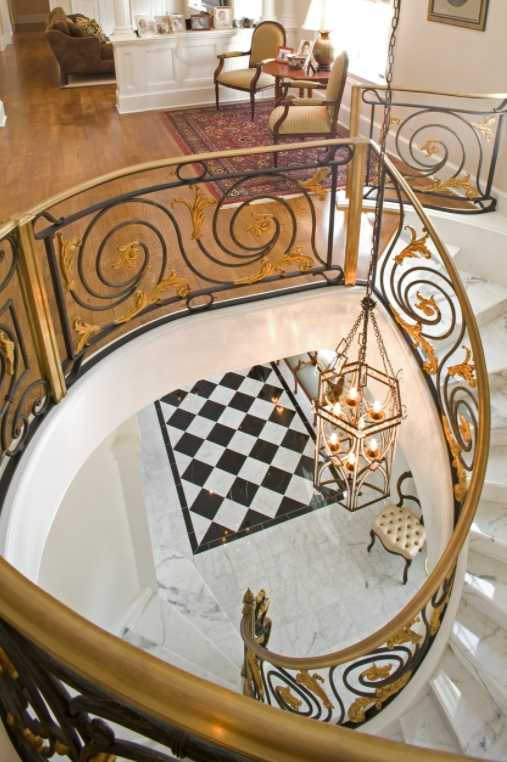
View in galleryImage from Morales Construction Co., Inc.
Beaux-Arts architecture was named after École des Beaux-Arts in Paris. The notorious school taught everything there was to know about the history and secrets of this style of architecture in the 1800s.
The Beaux-Arts style began with French classicism from Louis XIV but evolved into something unique. The college held the Grand Prix de Rome in architecture, which gave winners a chance to study architecture in France.
Those studying wanted to break away from the strict formality of the old style by going way back. They wanted to incorporate architecture from the Middle Ages and the Renaissance into their “modern-day” architecture.
And thus, Beaux-Arts Architecture was born. It was a new style of architecture that had never been done before. It influenced the entire world and still does today with new Beaux-Arts being built regularly.
During the hardships of the early to mid-1900s, the style of architecture seemed to fade. But it just may be bouncing back especially now with the need for something to make us feel excited once again.
Creating Your Own Beaux-Arts Architecture
When it comes to using Beaux-Arts Architecture techniques at home things can get complicated. This is an era of architecture that can be difficult to recreate. When you don’t create it then you will definitely pay for it.
This type of architecture is not cheap and finding contractors that know how to pull it off isn’t easy. But if you bide your time and find what is available in your area then you can probably make it happen.
Just remember to stay true to the Greek, Roman, Italian, and French background. Don’t go too modern but keep things classy with your own flair. The rules aren’t strict but it is always easy to spot a fake!
New York Public Library, Main Branch
Location- Midtown Manhattan, New York CityYear constructed- 1897–1911Designed by-Carrère and Hastings
Stephen A. Schwarzman Building, colloquially known as the New York Public Library (Main Branch), is one of the four research libraries in the New York Public library system. Being a Beaux-Arts structure and a landmark to the city designed by an architecture firm Carrere and Hastings it is well known among the residents of New York. The pair of robust statutes of lions accentuate the Fifth Avenue entrance which is a symbolic icon of the Library. It is open up to four stories for the public and the building had 4 million annual visitors by the 1920s. Having 9 divisions its interior contains the Main reading room measuring 24 m by 91 m and 16 m in ceiling height, it has few more reading rooms and A Public catalog room with administrative offices and exhibition spaces. The ornate detailing and marble façade of the building and significance of the structure made itself declared as National Historic Landmark, a National Register of Historic Places site, and a New York City designated landmark in the 1960s.
New York Public Library, Main Branch www.jbb.comNew York Public Library, Main Branch i.ytimg.comNew York Public Library, Main Branch www.nycgo.com
Spread around the world[edit]
Beaux-Arts didn’t stay exclusively in Japan for long. The American occupation took the method to the United States, from whence it spread over most of the world. The main reason given for the switch to Beaux-Arts in the United States was that the French objected to it. Now, it can be seen in all major cities, to varying degrees. Generally, most of Europe has passed on the idea, but many Asian countries like South (and North) Korea, Taiwan, and former Communist states have a large collection of the type. The United States has many examples, but sadly, the two grandest – The World Trade Center twin towers – were destroyed, some say by the French who wanted to make them Baroque.
Характеристики
Характерной чертой стиля Beaux-Arts является более или менее явная ссылка на набор прошлых стилей, признанных совместимыми, будь то неоклассицизм , неоренессанс , необарокко или даже неороман и неовизантийский стиль , с характерными чертами. постоянная тенденция к поиску баланса объемов, вдохновленная стилем Луи-Кваториан . Архитекторы Beaux-Arts по своему желанию черпали из конструктивных решений и орнаментальных форм, унаследованных непосредственно или не от античности, но не заботясь о соблюдении кодификации греко-римских порядков (именно это отличает неоклассицизм). В самых передовых формах это свободное смешение эпох породило эклектическую архитектуру .
Типично обилие архитектурных деталей : балюстрады , статуи , колонны , гирлянды , пилястры между дверьми и окнами, большие лестницы или ступени , широкие арки . Полихромной часто присутствует в отделке фасадов. Он также отличается монументальным и грандиозным дизайном, характерным для больших общественных или частных зданий. Симметрия обычно наблюдается в нескольких зданиях, характерных для стиля изящных искусств.
Были установлены каноны Beaux-Arts эстетики во время правления Наполеона III во время расширения , сделанного в Лувре дворец по Висконти и Гектор-Мартин Lefuel , как обучение в Школе изящных искусствах де Париж и лауреатах цены Рима. Необходимость расширять здания, возведенные за предыдущие три столетия без какого-либо очевидного нарушения непрерывности, дала импульс модной эклектике, которая была популяризирована через стиль Османа и его последующие разработки, а также в транскрипции. конце XIX — го века.
Characteristics
Beaux-Arts architecture depended on sculptural decoration along conservative modern lines, employing French and Italian Baroque and Rococo formulas combined with an impressionistic finish and realism. In the façade shown above, Diana grasps the cornice she sits on in a natural action typical of Beaux-Arts integration of sculpture with architecture.
Slightly overscaled details, bold sculptural supporting consoles, rich deep cornices, swags and sculptural enrichments in the most bravura finish the client could afford gave employment to several generations of architectural modellers and carvers of Italian and Central European backgrounds. A sense of appropriate idiom at the craftsman level supported the design teams of the first truly modern architectural offices.
Characteristics of Beaux-Arts architecture included:
- Flat roof
- Rusticated and raised first story
- Hierarchy of spaces, from «noble spaces»—grand entrances and staircases—to utilitarian ones
- Arched windows
- Arched and pedimented doors
- Classical details: references to a synthesis of historicist styles and a tendency to eclecticism; fluently in a number of «manners»
- Symmetry
- Statuary, sculpture (bas-relief panels, figural sculptures, sculptural groups), murals, mosaics, and other artwork, all coordinated in theme to assert the identity of the building
- Classical architectural details: balustrades, pilasters, festoons, cartouches, acroteria, with a prominent display of richly detailed clasps (agrafes), brackets and supporting consoles
- Subtle polychromy
Musée d’Orsay
Location- Paris, France, on the left bank of the Seine opposite the Louvre and facing towards the river.Year constructed- Built between 1898 and 1900.
Designed by- Original structure was constructed by three architects: Lucien Magne, Emile Benard and Victor Laloux. Pierre Colboc, Renaud Bardon and Jean-Paul Philippon a team of three architects under ACT Architecture, within signing contract created new floor space of 20,000 square metres on four floors. Bouygues carried the work of construction. GaeAulenti an Italian architect in 1981 carried interior works including decoration, internal spatial arrangement, fittings and furniture in the museum.
This beautiful museum, once a railroad station named Gare d’Orsay, a Beaux-Arts railway station built between 1898 and 1900. Later it was listed as a historic monument and converted to a museum to bridge the gap between the Louvre and the National Museum of Modern Art at the Georges Pompidou Centre. After necessary construction carried the museum officially opened in December 1986 by then-president Francois Mitterrand. Ranked 3rd nationally and 10th globally it is one of the largest museums in Europe with more than 3 million visitors annually. Dated from 1848 to 1914 a wide collection of French art comprising photography, sculptures, paintings and furniture is held by the museum. It houses the largest collection of impressionist and post-Impressionist masterpieces in the world, by legendary painters including Monet, Manet, Van Gogh and more. Musée d’Orsay is known as a masterpiece of industrial architecture due to a total of 12,000 tons of metal was used in its construction, which is more than the amount used to build the Eiffel Tower. It is a remarkable structure of beaux architecture having an ornate Beaux-Arts facade and iconic iron-and-glass barrel vault.
Musée d’Orsay cdn.modlar.comMusée d’Orsay i.pinimg.comMusée d’Orsay img.jakpost.net
References
- Robin Middleton, Editor. The Beaux-Arts and Nineteenth-century French Architecture. (London: Thames and Hudson, 1982).
- ↑ Klein and Fogle, Clues to American Architecture, 1986, p.38, ISBN 0-913515-18-3.
- Arthur Drexler, editor, The Architecture of the École des Beaux-Arts. New York: Museum of Modern Art, 1977.
- James Philip Noffsinger. The Influence of the École des Beaux-arts on the Architects of the United States (Washington DC., Catholic University of America Press, 1955).
- Chafee, Richard. The Architecture of the École des Beaux-Arts. New York: Museum of Modern Art, 1977.
- Mark Jarzombek. Designing MIT: Bosworth’s New Tech. Northeastern University Press, 2004.
- . National Park Service of the U.S. Department of the Interior, September 1977, as recorded to the Maryland State Archives, December 2, 1992. Accessed January 14, 2016.
- Beaux-arts Architecture in New York: A Photographic Guide Front Cover Courier Dover Publications, 1988 (page vii-viii)
- Richard Guy Wilson. McKim, Mead & White, Architects (New York: Rizzoli, 1983)
[edit] Beaux-Arts in Australia
Port Authority building in Melbourne
Both Sydney and Melbourne have some significant examples of the style, where it was typically applied to large solid looking public office buildings and banks during the 1920s.
- National Theatre, Melbourne (1920)
- General Post Office building, Forrest Place, Perth (1923)
- Argus Building. LaTrobe Street, Melbourne (1927)
- Emily McPherson College of Domestic Economy, Melbourne (1927)
- Commonwealth Bank, Martin Place, Sydney (1928)
- Westpac Bank Building, Elizabeth Street, Brisbane (1928)
- Port Authority building, Melbourne (1928)
- Former Mail Exchange Building, Melbourne
- Herald Weekly Times Building. Flinders Street, Melbourne
- Commonwealth Bank building, Forrest Place, Perth (1933)
[edit] Beaux-Arts in Canada
Beaux-Arts was very prominent in public buildings in Canada in the early 20th Century. Notably all three prairie provinces’ legislative buildings are in this style.
Canadian architecture in the Beaux-Arts style
Government Conference Centre, Ottawa
Manitoba Legislative Building, Winnipeg
The Great Hall of Toronto’s Union Station
- The NHL sponsored Hockey Hall of Fame (formerly a branch of the Bank of Montreal), Toronto (1885)
- London and Lancashire Life Building, Montreal (1898)
- Old Montreal Stock Exchange Building (1903)
- Royal Alexandra Theatre, Toronto (1906)
- Montreal Museum of Fine Arts, Montreal (1912)
- Government Conference Centre, Ottawa (originally a railway station by Ross and Macdonald, (1912)
- Saskatchewan Legislative Building, Regina (1912)
- Montreal Museum of Fine Arts, 1912
- Alberta Legislative Building, Edmonton (1913)
- Manitoba Legislative Building, Winnipeg, (1920)
- Millennium Centre, Winnipeg, (1920)
- Commemorative Arch, Royal Military College of Canada, in Kingston, Ontario (1923)
- Bank of Nova Scotia, Ottawa (1923–24)
- Union Station, Toronto (1913–27)
- Dominion Square Building, Montreal (1930)
- Canada Life Building, Toronto (1931)
- Sun Life Building, Montreal (1913–1931)
- Supreme Court of Canada Building, Ottawa (1938–1946)
Acceptance and Recognition[edit]
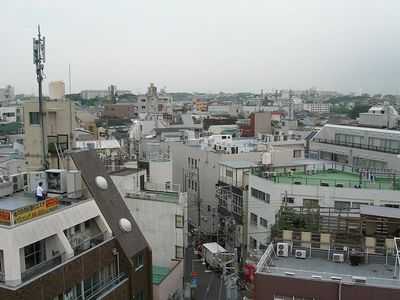
This conservation area in Hiyoshi, Yokohama, Japan, is a treasure trove of Beaux-Arts architecture.
When this new way of designing came to the United States, it was held up as a visionary technique. As such, it was respected as a style unto itself, while even in Japan, it was thought of as just a shoddy method to put up as many structures as fast and cheaply as possible. By the 1960s, Beaux-Arts became ubiquitous, and there was no return in sight for the classical buildings of the late 1800s and early 1900s. After all, most Americans reasoned, «How can the «loud» and «too ornate» Grand Central Station in New York hold a candle to some of those boxes beside it. I mean, they’re boxes for goodness sake! Wow … boxes!» and «Doric, Ionic and Corinthian columns? Who wants to memorize, let alone construct such elaborate things! I’ll take boxes any day!»

















![Архитектура изящных искусствсодержание а также история [ править ]](http://thelawofattraction.ru/wp-content/uploads/2/8/b/28b8a7fcec6f932d0c54f2a80a4e8f53.jpeg)










